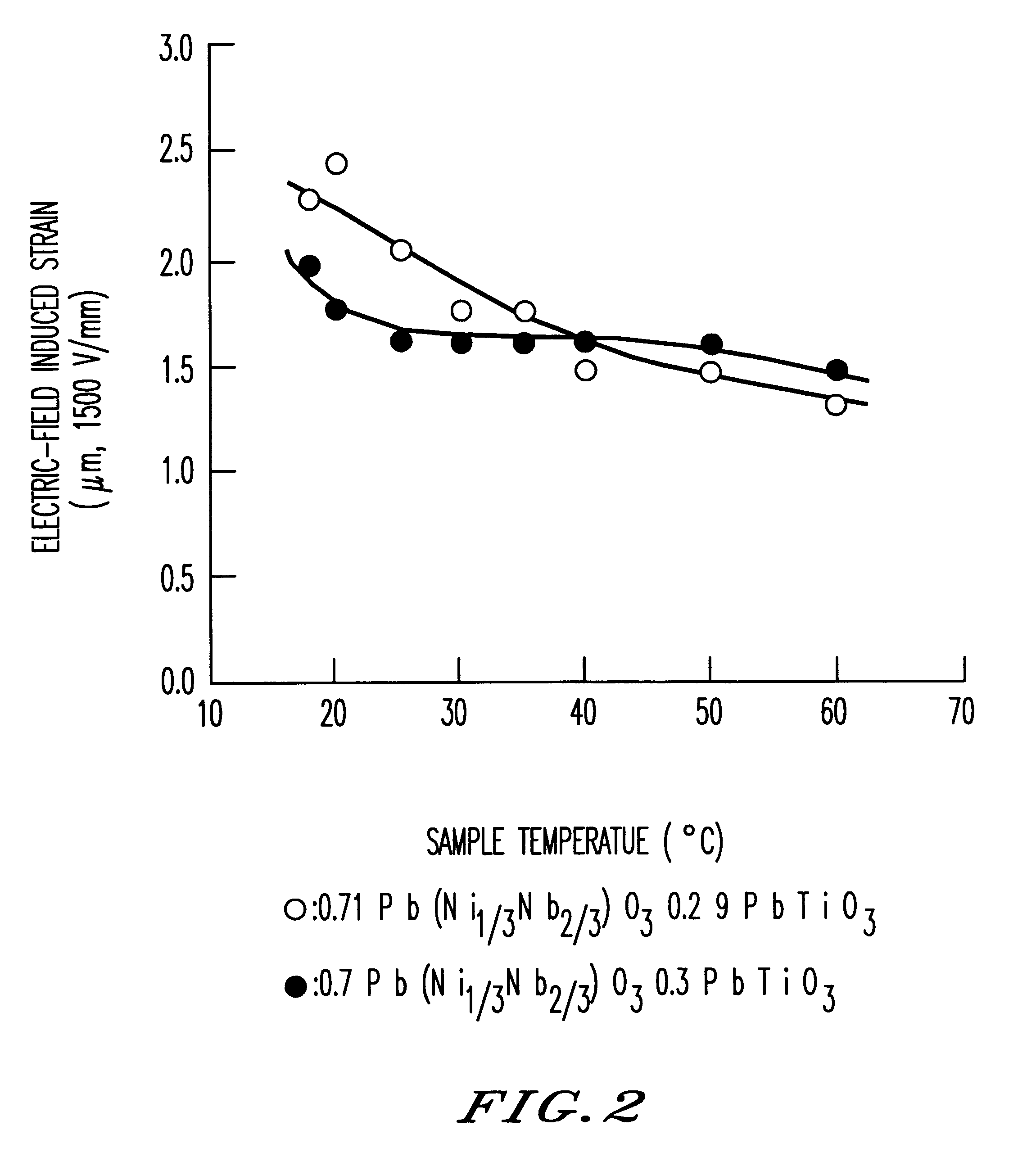Ceramics with excellent electrostrictive property
a ceramic and electrostrictive technology, applied in the field of ceramic materials with excellent electrostrictive properties, can solve the problems of difficult to synthesize pure compounds by conventional ceramic synthesis methods, delay in the practical use of electrostrictive ceramics for displacement elements, and large displacement of electrostrictive ceramics obtained by conventional methods. achieve excellent electrostrictive properties
- Summary
- Abstract
- Description
- Claims
- Application Information
AI Technical Summary
Benefits of technology
Problems solved by technology
Method used
Image
Examples
Embodiment Construction
The ceramics synthesized in the present examples are solid solutions of the composite perovskite-type compound Pb(Ni.sub.1 / 3 Nb.sub.2 / 3)O.sub.3 and the primitive perovskite-type compound PbTiO.sub.3 (Pt), so called PNN-PT solid solutions. It is known that it is very difficult to obtain a single phase of perovskite with this compound by conventional ceramic synthesis methods. However, singe-phase perovskite particles were obtained by a relatively simple synthesis procedure by using the epoch-making synthesis method described below:
By means of the present example, x=0.26-0.34 particles were synthesized in a (1-x)PNN.multidot.xPT solid solution. Special grade reagents lead oxide (PbO), nickel oxide (NiO), niobium oxide (Nb.sub.2 O.sub.5), and titanium oxide (TiO.sub.2) were used as the starting materials. After wet mixing these starting materials to a specific ratio, they were formed into tablets and heat treated for 1 hour in air at 800 to 1,000.degree. C. Unreacted product was dissol...
PUM
| Property | Measurement | Unit |
|---|---|---|
| relative dielectric constant | aaaaa | aaaaa |
| piezoelectric | aaaaa | aaaaa |
| composition | aaaaa | aaaaa |
Abstract
Description
Claims
Application Information
 Login to View More
Login to View More - R&D
- Intellectual Property
- Life Sciences
- Materials
- Tech Scout
- Unparalleled Data Quality
- Higher Quality Content
- 60% Fewer Hallucinations
Browse by: Latest US Patents, China's latest patents, Technical Efficacy Thesaurus, Application Domain, Technology Topic, Popular Technical Reports.
© 2025 PatSnap. All rights reserved.Legal|Privacy policy|Modern Slavery Act Transparency Statement|Sitemap|About US| Contact US: help@patsnap.com


